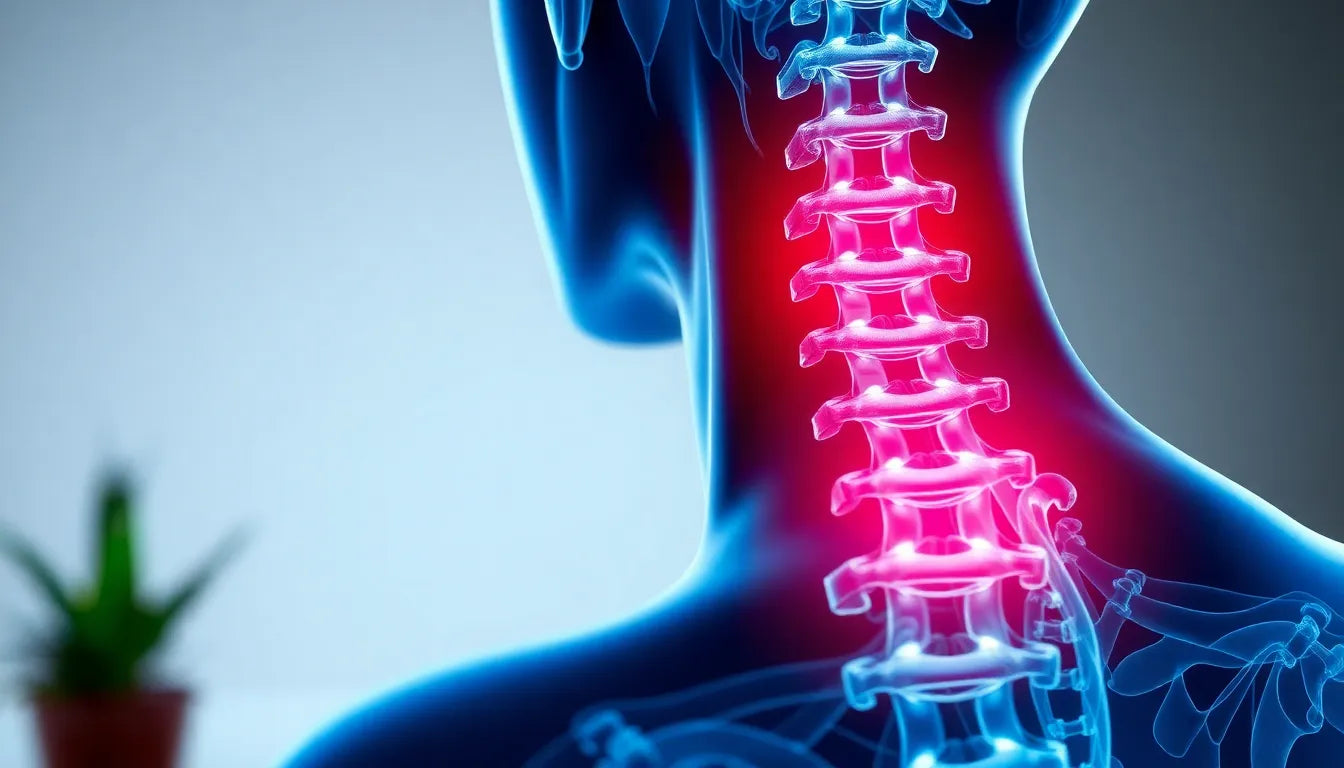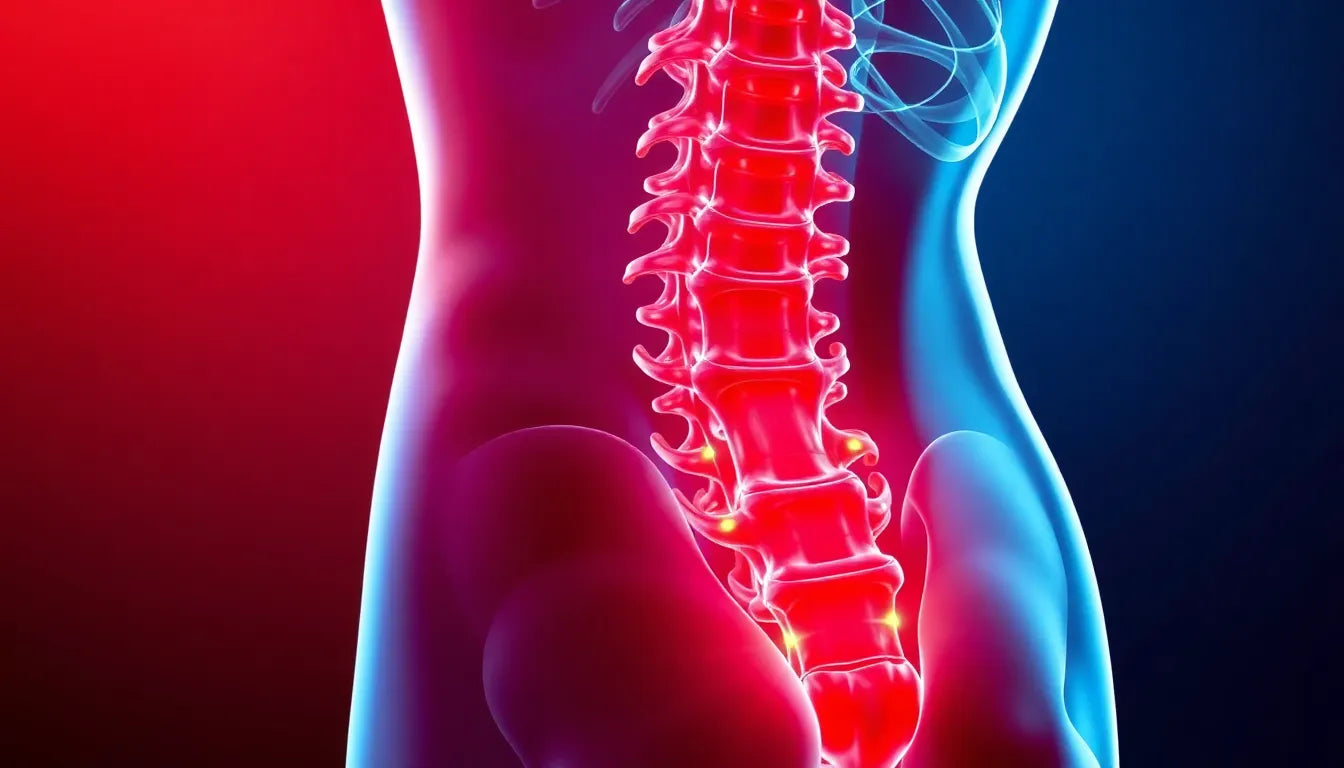When it comes to understanding herniated discs, there are many misconceptions floating around, particularly about how common they are. Some believe they're a rare phenomenon, while others think almost everyone will experience one at some point. So, how common is a herniated disc really? This question is not just of academic interest; it holds significant implications for both patients and healthcare providers. Understanding the prevalence of herniated discs can help in early diagnosis, effective treatment, and better management of this condition.
what is a herniated disc?
A herniated disc occurs when the soft, gel-like center of a spinal disc pushes through a crack in the tougher exterior casing. This can irritate nearby nerves and result in pain, numbness, or weakness in an arm or leg. While the condition can be quite painful, it's important to note that not every herniated disc will cause symptoms. Some people may not even realize they have one until it shows up on an imaging test for another condition.
The spine is composed of 33 vertebrae, separated by intervertebral discs that act as shock absorbers. These discs allow for flexibility and movement, but they can also be a source of pain if they become damaged. Most herniated discs occur in the lower back, although they can also appear in the neck. Understanding how common these occurrences are can help demystify the condition and guide both preventative and therapeutic measures.
why understanding prevalence matters
Knowing how prevalent herniated discs are can significantly impact how we approach back health. For patients, understanding the likelihood of developing a herniated disc can inform lifestyle choices, such as engaging in exercises that strengthen the back and core or practicing proper lifting techniques. For healthcare providers, prevalence data can guide diagnostic protocols and treatment plans, ensuring that resources are allocated efficiently and effectively.
In this blog post, we aim to shed light on the true prevalence of herniated discs. We will delve into statistical data, explore demographic patterns, and consider expert insights to provide a comprehensive overview. Our goal is to offer a clear, informative perspective on this common spinal condition, helping you make informed decisions about your health and well-being.
prevalence and demographics of herniated discs
Understanding the prevalence of herniated discs requires a closer look at the demographics most affected by this condition. Studies have shown that herniated discs are particularly common in individuals aged between 30 and 50 years. This age group is often more active, which may contribute to the higher incidence of disc herniation. Interestingly, men are twice as likely to experience a herniated disc compared to women, with a male to female ratio of 2:1. This disparity is often attributed to differences in physical activity levels and occupational hazards that are more prevalent among men.
Furthermore, a significant majority of herniated discs, approximately 95%, occur in the lower lumbar region of the spine, specifically at the L4/5 and L5/S1 levels. This area is subjected to substantial mechanical stress, making it more susceptible to injury. Such data underscores the importance of targeted preventive measures and early interventions, particularly for those within these age and gender demographics.
clinical study findings on herniated discs
Clinical studies provide deeper insights into the prevalence of herniated discs among individuals experiencing low back pain. According to a systematic review published in the Open Medical Publishing journal, between 5-15% of patients with low back pain are diagnosed with lumbar disc herniation. This highlights the need for careful diagnostic procedures to differentiate herniated discs from other causes of back pain.
Moreover, MRI-based studies indicate that about 31.9% of patients with low back pain are found to have lumbar disc herniation. This significant percentage suggests that imaging techniques play a crucial role in accurately diagnosing the condition and guiding appropriate treatment plans. Such findings emphasize the importance of advanced diagnostic tools in managing back pain effectively.
risk factors and age distribution
Various risk factors contribute to the likelihood of developing a herniated disc. Men, as previously mentioned, are more prone to this condition due to increased mechanical stress and the potential for injury. Occupational activities that involve heavy lifting, repetitive motions, or prolonged sitting can exacerbate these risks. Additionally, lifestyle factors such as smoking and obesity are known to weaken spinal structures, further increasing the risk of disc herniation.
Age also plays a critical role in the distribution of herniated discs. The active age groups of 40-49 and 50-59 years are particularly vulnerable, as noted in a study from the OAMJMS journal. These age groups often face a combination of occupational and lifestyle stressors that can lead to disc degeneration and herniation.
visualizing herniated disc statistics
To better understand the statistical landscape of herniated discs, a simple table or infographic can be an effective tool. By summarizing key statistics on age, gender, and prevalence rates, visual aids can make complex data more accessible and easier to comprehend. For instance, a table could highlight the prevalence rates among different age groups and illustrate the male to female ratio, providing a quick reference for both patients and healthcare providers.
In conclusion, understanding the prevalence and demographics of herniated discs is essential for developing targeted preventive strategies and effective treatment plans. By recognizing the age groups and risk factors associated with this condition, individuals can take proactive steps to protect their spinal health, while healthcare providers can offer more personalized care. As we continue to explore the nuances of herniated disc prevalence, the importance of data-driven insights cannot be overstated in improving patient outcomes and enhancing quality of life.
Understanding herniated discs in simpler terms
To truly grasp how common herniated discs are, it's helpful to break down the medical jargon into simpler language. Imagine your spine as a stack of jelly donuts. Each donut represents a spinal disc, with a soft center encased in a tougher exterior. A herniated disc occurs when the jelly leaks out through a crack in the donut's shell. This can irritate nearby nerves, leading to symptoms like pain or numbness. However, not everyone with a herniated disc experiences symptoms, much like not every cracked donut leaks jelly.
Understanding this analogy can help demystify the condition. It shows why some people might not even realize they have a herniated disc until it's discovered during an imaging test for an unrelated issue. This underscores the importance of awareness and regular check-ups, especially for those in high-risk demographics.
Real-life journey of managing a herniated disc
Consider the story of John, a 45-year-old office worker who began experiencing persistent lower back pain. Initially dismissing it as a result of long hours at his desk, John was surprised when an MRI revealed a herniated disc at the L5/S1 level. With guidance from his healthcare provider, John embarked on a treatment plan that included physical therapy and lifestyle adjustments, such as incorporating regular exercise and ergonomic improvements at his workstation. Over time, these changes not only alleviated his discomfort but also improved his overall quality of life, demonstrating the potential for effective management of herniated discs.
Preventive measures and lifestyle changes
Prevention is key in reducing the risk of developing a herniated disc. Simple lifestyle changes can make a significant difference. Maintaining a healthy weight reduces stress on the spine, while regular exercise strengthens the core muscles that support it. Activities such as swimming or walking can be particularly beneficial. Additionally, practicing proper lifting techniques—bending at the knees rather than the waist—can prevent unnecessary strain on the back. Ergonomic adjustments in the workplace, like using a chair with proper lumbar support, can also play a crucial role in spinal health.
Frequently Asked Questions
What is a herniated disc?
A herniated disc occurs when the soft center of a spinal disc pushes through a crack in its tougher exterior. This can irritate nearby nerves, causing pain, numbness, or weakness in the limbs.
How can I tell if I have a herniated disc?
Common symptoms include back pain, numbness, tingling, or weakness in an arm or leg. If you experience these symptoms, it's advisable to seek medical advice for a proper diagnosis.
Can herniated discs heal on their own?
Yes, many herniated discs can heal with time and conservative treatment, such as rest, physical therapy, and pain management. However, some cases may require medical intervention.
What are the treatment options for a herniated disc?
Treatment options vary depending on the severity of the condition. They may include physical therapy, medications, lifestyle changes, or in severe cases, surgery.
Are there any long-term effects of a herniated disc?
While many people recover fully, some may experience chronic pain or nerve damage. Ongoing management and lifestyle adjustments can help mitigate these effects and improve quality of life.
By understanding the prevalence and impact of herniated discs, individuals can take proactive steps to protect their spinal health, while healthcare providers can offer more personalized care. This comprehensive approach ensures better outcomes and enhances overall well-being.


















